Studies showing cancer reversal / shrinking
-
I feel like oleocanthal and oleurupin deserve more attention.
Check this out. 97% reduction in cancer growth in-vivo!
Mostly by inhibiting estrogen.
But it's also been shown to be effective in other cancers.
"Treatment with 5 mg/kg or 10 mg/kg (−)-oleocanthal resulted in 97% inhibition of tumor growth in orthotopic athymic mice bearing BT-474 tumor xenografts compared to vehicle-treated animals. (−)-Oleocanthal treatment reduced total levels of estrogen receptors in BT-474 cells both in vitro and in vivo. "
"Anticancer activity of (−)-oleocanthal has been demonstrated in different tumor types including breast carcinoma, prostate carcinoma, hepatocellular carcinoma, colon cancer, melanoma, and multiple myeloma (Akl et al., 2014; Elnagar et al., 2011; Fini et al., 2008; Fogli et al., 2016; Pei et al., 2016; Scotece et al., 2013)"
-
farcarinol (from carrots and related plants like ginseng) and related compounds for colon cancer
also knows as panaxynol or carotatoxin
interestingly-- the nrf2 stimulating activity is apparently higher in relevant dietary doses from carrots than it is from cruciferous vegetable. another contradiction in the peater world
-
-
1 haidut posted before:
BRAF + MEK inhibition therapy {inhibiting MAPK through selective paths} + the doxycylcine antiobiotic = regression in a person who had metastasised melanoma into liver & bile duct
https://pmc.ncbi.nlm.nih.gov/articles/PMC4699264/
https://rupress.org/jem/article/218/9/e20210571/212494/Activation-of-the-integrated-stress-responsealone didnt do much , but helped delay the eventual resistance seen in the yellow line

In the person it gave full remission as doxycycline + the mapk inhibitors
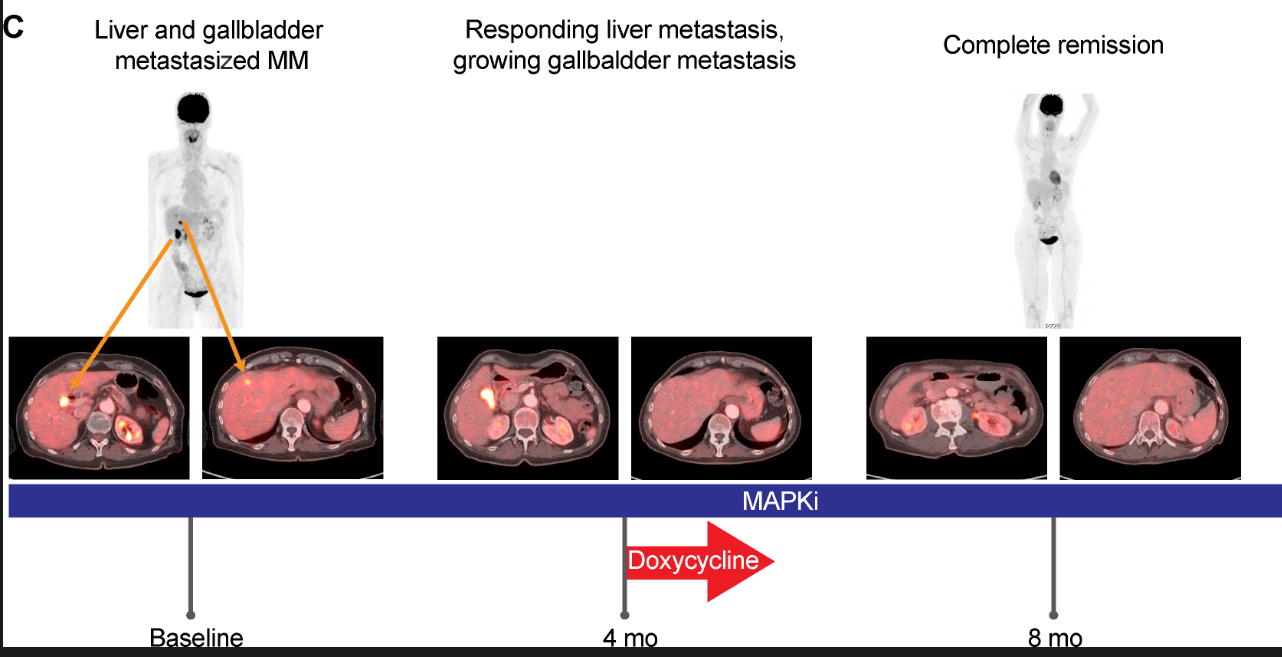
To assess the relevance of our in vitro and preclinical findings, we followed the clinical course of one 73-yr-old female patient at our clinic. The patient was diagnosed with stage III melanoma in 2011 and with a relapse of her disease in 2016 after an episode of jaundice, which was related to a tumor mass in her gallbladder and bile duct.
the presence of brown pigment associated with these cells was highly suggestive for a melanoma metastasis.
Subsequently BRAF-MEK inhibitor therapy was initiated. Response assessment after four cycles showed that while the liver metastasis had responded to the treatment, the gallbladder did not.
Due to a skin infection (an acne-like rash) the patient received doxycycline during her fifth BRAF-MEK inhibitor cycle for a total of 12 d.
Strikingly, the gallbladder metastasis started to regress after six cycles, as measured by CT scan, and the PET-CT scan after eight cycles showed a complete response. The patient was under BRAF-MEK inhibitor therapy and had a persistent response for >36 mo (Fig. 6 C). This particular case study highlights the potential clinical benefit of using tetracyclines to sensitize intrinsically resistant lesions to MAPK inhibitors.*Lipoic acid is a mapk inhibitor, and showed decent effects slowing tumors alone i posted in the first post.
https://onlinelibrary.wiley.com/doi/10.1155/2022/1894379ALA inhibited a variety of mitogen-activated protein kinase (MAPK) signaling pathways in the epithelial cells
So i wonder if a combo of lipoic acid + doxycycline could be good for giving regression of melanoma / metastasised melanoma to other areas
50 - 150uM is too high to hit in vivo probably, its like 20ug/ml blood i think
so maybe for topical applied to melanoma as the combo. lipoic acid can penetrate if absorbs in right thing, propylene glycol or heated mct oil. not sure about doxycycline . But short half life on lipoic so would have to get a lot in
https://pmc.ncbi.nlm.nih.gov/articles/PMC3648887/ here they got 14ug/cm2 to pass through normal skin
but melanoma = melanocytes so i guess easier to penetrate as doesnt have the outer SC layer?
maybe theres something else for systemic use
extra: (not showing remission but metastasis effect)
B-Glucan (particulate) melanoma matastasis prevention
https://www.researchgate.net/publication/327193765_Beta-glucan-induced_inflammatory_monocytes_mediate_antitumor_efficacy_in_the_murine_lung
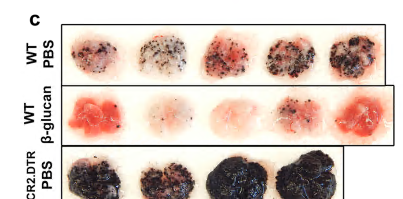
oat b-gluten best effect at 200kda size
https://www.researchgate.net/publication/320392541_Systemic_Administration_of_bglucan_of_200_kDa_Modulates_Melanoma_Microenvironment_and_Suppresses_Metastatic_Cancer
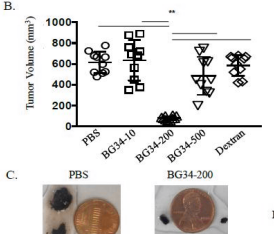
turkey tail glucan is 100kda https://pmc.ncbi.nlm.nih.gov/articles/PMC10000499/
Feeding inhibition effect (but is anti androgen)
https://pubmed.ncbi.nlm.nih.gov/26408688/ -
Another showing regression of existing tumors
human squamous cell carcinomaFeeding high amounts of silymarin
(note silymarin / milk thistle inhibits thyroid hormone transport, not suitable for general use)Shrank the pre existing tumors

doi.org/10.1093/carcin/23.3.499



melanoma, 500mg/kg ~ 3g human only using 1 dose every 2weeks slowed
but didnt regress (maybe lower dose more often could have too)
10.1002/mc.22208
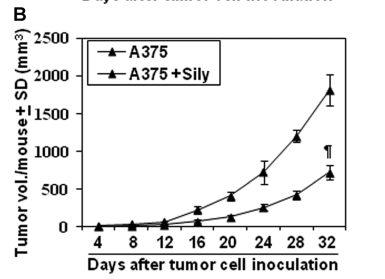
200mg/kg 5days a week for 5 weeks , didnt show kidney or liver toxicity 10.1177/1010428318776170
stalled growth in an oral tumor until the end, but didnt get to regression

Can penetrate skin in Propylene glycol and stays in skin cells for long while https://www.sciencedirect.com/science/article/abs/pii/S0378517322009863
glycerol / glycerine increases growth of some tumors so probably not appopriate as to use for entry
https://pmc.ncbi.nlm.nih.gov/articles/PMC8908677/Propylene glycol is different. maybe some connection but is used as penetration enhancer in anti tumor studies with effect still so
https://pubmed.ncbi.nlm.nih.gov/23186833/Mct oil might be good if it dissolves well, warmed in a saucepan
-
@cs3000
450mg daily created regression in this persons liver tumor, to half its size. but the effects stalled and it re-grew after around a year
https://pmc.ncbi.nlm.nih.gov/articles/PMC2769275/Ultrasonography in our outpatient department revealed a large tumour with central necrosis, measuring about 11 cm in diameter,
CT scan of the liver was performed again and revealed HCC regression, with tumour size reduced to about 4.6 cm in diameter, and portal vein thrombosis (Figure 3).
Silymarin 450 mg daily was the only regularly prescribed medicine during HCC reduction.
The tumour size did not contract persistently as shown by abdominal echo. CT scan of the liver was performed prior to the surgery, revealing an HCC size similar to the previous readings and portal vein thrombosis.@cs3000 said in Studies showing cancer reversal / shrinking:
Another showing regression of existing tumors
human squamous cell carcinoma
Feeding high amounts of silymarin
( note silymarin / milk thistle inhibits thyroid hormone transport, not suitable for general use)
Shrank the pre existing tumors

-
Natural compound Physachenolide C (but not commercially available yet) gave complete remission in melanoma. in 1/3 of the mice it stayed regressed. (in the other 2/3, maybe doxycycline could have brought back the effect)
its a highly potent BET inhibitorhttps://pmc.ncbi.nlm.nih.gov/articles/PMC8571524/#sec0011
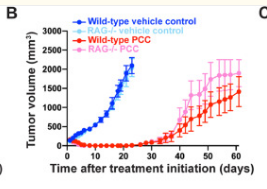
enhanced immunotherapy for regression (enhance with b-glucan?)
https://pmc.ncbi.nlm.nih.gov/articles/PMC8802328/#S19 -
interesting find - if u target a main 2% subset of melanoma cells the tumor goes in most cases without destroying the other part. if some are left theres potential for the regression to return
(does doxycyline help these ones get destroyed when combined with inhibitors?)https://www.pnas.org/doi/10.1073/pnas.1009069108
we revealed that established tumor lesions can be efficiently eradicated by targeted elimination of the less than 2% subset of melanoma cells with the CD20+ high molecular weight melanoma-associated antigen (HMW-MAA)+ phenotype without targeting the tumor cell mass, whereas targeted elimination of any minor subset is less effective.
These data provide a strategy for improving the biological therapy of melanomas and, moreover, for redesigning current drug development paradigms used in the treatment of cancer.HMW-MAA+ cells gave rise to melanomas upon transplantation, whereas sorted HMW-MAA− cells from the same melanoma did not.
indicating that these cells exhibit melanoma-initiating capacities.
T cells with redirected specificity for CD20 eradicated established melanoma lesions in four out of five melanoma biopsies, although the targeted cells represented less than 2% of melanoma cells.
It is noteworthy that transplanted tumors of patient 5, in which no CD20+ melanoma cells were detected, could not be eradicated by a CD20-redirected T-cell attack.Where tumors were eradicated, no tumor relapse occurred during the observation period of >36 wk.
Because no tumor relapse was observed in any case during the >36 wk observation period, such melanoma eradication is obviously long lasting
We conclude that CD20 is not functionally crucial but marks a specific cell population. The unexpected observation, however, is that targeting the minor CD20+ melanoma cell population is as effective as targeting the majority of tumor cells. A caveat for a broad therapeutic application is that obviously some melanomas, in our cohort one out of five patients, do not harbor CD20+ melanoma cellsThe observation that the specific elimination of a minor subset of tumor cells results in eradication of established melanoma lesions is crucial for the understanding of the biology of melanoma. Continuous melanoma growth obviously requires the presence of a minor population of cells, which displays the CD20+ HMW-MAA+ phenotype;Elimination of these cells is obviously required to eradicate the melanoma irrespective of the bulk of tumor cells
-
@cs3000 WIlliam Koch the chemistry of natural immunity, cases at the bottom pages showing amazing recoveries
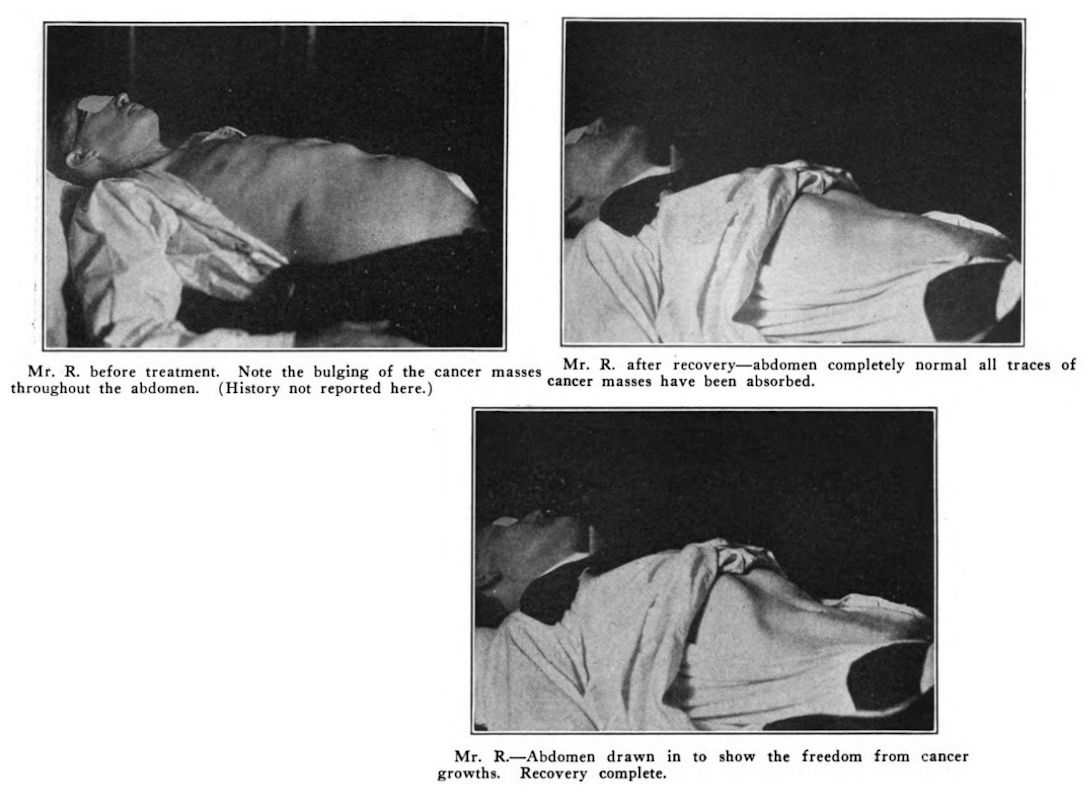
@cs3000 said in Studies showing cancer reversal / shrinking:
Human trial with methylglyoxal {aka pyruvaldehyde} (william Koch compound)
https://web.archive.org/web/20161017113947/http://www.cancer-therapy.org/CT/v4/B/HTML/17. Talukdar et al, 205-222.htmlLong term in a variety of cancers, ~80% of the people had remission or stability
, -
@cs3000 Nice, was that just methylglyoxal. Or also 6 months of vegan , low protein diet ?
-
@Mauritio all of it combined probably with methylgloxal being the main effect, maybe the low protein helps improve response rate,
In the modern trial ~40% of the people got complete remission of their tumors taken orally daily, without dietary changes mentioned just added vitamin C. Koch injected it just 1 time into muscle, then waited a couple weeks and repeated that twice more if needed
they tested some other stuff with efficacy on animals (human study mentioned low toxicity for the methylgloxal tho when done in vivo and as just methylglyoxal form)
other ones , they're "unsaturated diketones" or things that form them as "peroxides of substances that liberate free carboyl groups to form the unsatured diketone"
"Unsaturated diketones are organic compounds containing two ketone (carbonyl, C=O) functional groups and one or more double or triple bonds within their molecular structure. These unsaturated bonds make the molecule chemically reactive and allow for unique properties."
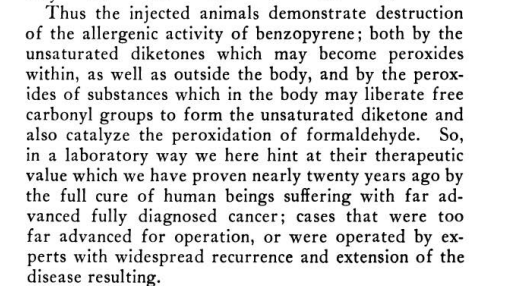
Something interesting, some of those substances create carbon dioxide when they degrade. or relates in some way
Quinones are unsaturated diketones
part of curcumin molecule is an unsaturated β-diketone https://casereports.bmj.com/content/2017/bcr-2016-218148 but generally they havent shown remission like the methylgloxal
some ketones like acetylacetone -
@cs3000 said in Studies showing cancer reversal / shrinking:
In the modern trial ~40% of the people got complete remission of their tumors taken orally daily, without dietary changes mentioned just added vitamin C. Koch injected it just 1 time into muscle, then waited a couple weeks and repeated that twice more if needed
Nice can you link this trial ?
Is the vitamin C there to help it cycle between reduced and oxidized ? -
@cs3000 - Interesting thread. Most of it is above my understanding.
Manuka honey has a high level of Methylglyoxa. Up to 100 higher than regular honey. Great for skin cancers but diabetics might need to understand the possible risk.
Methylglyoxal—A Potential Risk Factor of Manuka Honey in Healing of Diabetic Ulcers (2010)
Methylglyoxal levels also appear to be higher in Alzheimer patients.
Methylglyoxal, Glyoxal, and Their Detoxification in Alzheimer's Disease (2006)
I am wondering if the oral use of Methylglyoxal for cancer could cause other issues in the patient. Sort of a Whack-A-Mole of diseases.
-
This post is deleted! -
Just noticed these replies @DavidPS @Mauritio William koch only used it for 1 or a few injections mostly (combined with protein aka methionine restriction while its doing its thing to boost response further) . So orally is extending things for lower potency over a longer time. doesnt sound like something beneficial to use generally at these amounts, but specific for outweighing effect on tumors (& other dysfunctions by the book) that looks profound. thanks something to weigh with diabetes, if the need to deal with tumors outweighs or if it can be offset at wounds locally e.g using co2 baths potentially. (radiation / chemo is probably not good for diabetic wounds either)
in the animal study below showing 80% complete remission (amazing result u dont see elsewhere, or without extreme toxicity) they tested high doses for 1 month on various animals. no significant detriment in behaviours, or toxicity to reproductive system, had healthy offspring, organs tested were fine
when they injected it they had initial pain, and eventually some swelling until 10 days after treatment ended (possibly repeat injections?).
So on the macro level at least looks safe enough in general condition considering results for 1 month, but with some proinflammatory effect. But this one, weirdly using much lower dose, but for longer at 6 weeks, showed impaired wound healing and some detrimental measures doi.org/10.1042/CS20050026 and over months showed kidney changes https://pubmed.ncbi.nlm.nih.gov/9740317/
whether creatine can protect from these changes too outside of the heart e.g in kidneys, not suremy take on that is the large doses arent showing much toxicity so seems its based on duration, seems to me its the proinflammatory effect building up creating damage over time
- Btw with right approach it might not need to be used for over a month. Not sure but it showed effect at 10 days in the animal study but that was before it was established. The human study didnt use creatine to boost the effect further. and theres curcumin which might make it more effective too. thats if using orally
@Mauritio 80% complete remission in animal study when vitamin C + creatine was added too
https://pubmed.ncbi.nlm.nih.gov/16112157/the creatine is there for extra safety for the heart and for some reason boosts the effect further
However, in all the normal types of cells tested, methylglyoxal was found to inhibit mitochondrial respiration in only cardiac cells. Creatine, which is abundantly present in these cells, could completely protect against the inhibitory effect of methylglyoxal
& dehydyroascorbic acid form of Vit C is another thing with 2+ carbonyl groups so there to boost effect at decent doses like 500mg+, im guessing it will go up with the ascorbic intake. like taking ubiquinol raises ubiquinone (actually raises ubiquinone more than taking ubiquinone)
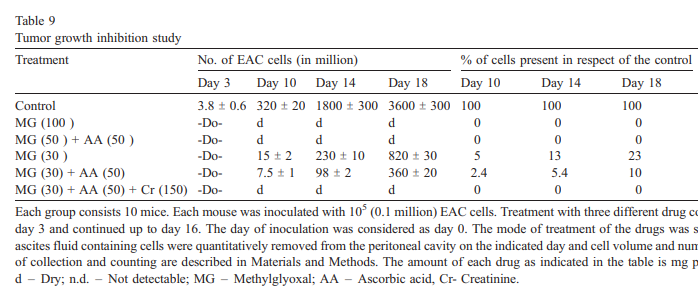
both methylglyoxal and methylglyoxal plus ascorbic acid treatment had significant inhibitory effect on cell proliferation. Moreover, treatment of methylglyoxal plus ascorbic acid plus creatine not only completely inhibited the cell proliferation but also made the peritoneal cavity completely dry.
human trial is here https://bioenergetic.forum/post/34639
-
@cs3000 Nice ! You might want to send this to Georgi , maybe he'll do a small study on it.
-
@cs3000 dehydroascorbic acid can be made by taking vit c with methylene blue . the anti cancer effect is pro ROS because cells take up dhaa and in converting it back to vit c it creates ROS which healthy cells have capacity to deal with while deranged cells generally dont so they get killed by autoschizcis mechanism (a specific type of cell death)
-
@cs3000 said in Studies showing cancer reversal / shrinking:
William koch only used it for 1 or a few injections mostly (combined with protein aka methionine restriction while its doing its thing to boost response further) .
At what does did Koch use it for injection?
-
@Mauritio good idea i sent an email to idelabs
@eduardo-crispino thanks. they used 500mg normal vit c
curcumin inhibits glyoxalase 1 so should boost the effectiveness further (curcumin + vit c + creatine) but also might make normal cells more vulnerable, tho has some anti inflammatory effect too.
https://pubmed.ncbi.nlm.nih.gov/18946510/
good writeup
https://www.cancertreatmentsresearch.com/methilglyoxal/@alfredoolivas his book on archive.org the chemistry of natural immunity has more details
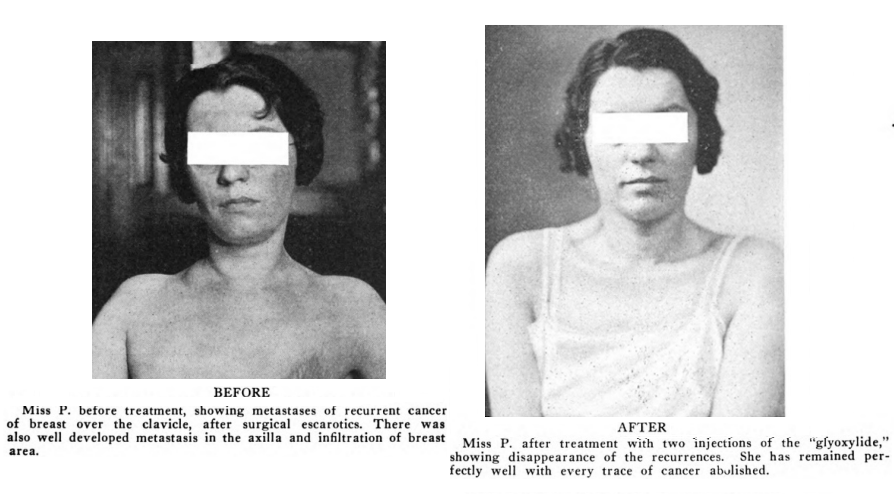
-
10.1097/CMR.0000000000000577 https://pubmed.ncbi.nlm.nih.gov/30615010/
https://www.cancertreatmentsresearch.com/10-cases-of-complete-remission-from-stage-4-cancers-after-using-supplements-or-repurposed-drugs/
https://www.jaad.org/article/S0190-9622(04)03675-8/fulltextWe report a long-term complete remission of cutaneous melanoma metastases related to the use of a folk treatment with the plant Thymus vulgaris.
.Multiple cutaneous melanoma metastatic nodules were diagnosed after histologic and immunohistologic examinations (Fig 2, A and B). There were no lymph node or visceral metastases on clinical, analytical, or staging examinations (including body computed tomography, cerebral magnetic resonance imaging, and bone scintigraphy). The patient was staged at AJCC stage III, but she refused the proposed treatment, which consisted of hyperthermic perfusion of the left leg with melfalan and interferon.

- A few weeks later, a progressive disappearance of all nodules was noted
Histologic examinations confirmed the complete regression of cutaneous metastases (Fig 2, C-F). The patient stated that she had been using dried thyme (ground leaves and stems) for herbal tea and for topical applications in compresses over the lesions. No evidence of disease in this patient is apparent after 5 years of follow-up.
No dose mentioned.
Dried Water extract shows potent effect at 500mg/kg in mice in other areas like lowering brain MDA. https://doi.org/10.1016/j.fct.2009.05.007
adding 1g - 10g of thyme stems to 1 kg diet showed inhibiting number of new tumors by 53% in the rat part, but no significant effect found on volume
But in the mice part of the study it showed great effect (breast tumors)
https://pmc.ncbi.nlm.nih.gov/articles/PMC6479806/#sec2-ijms-20-01749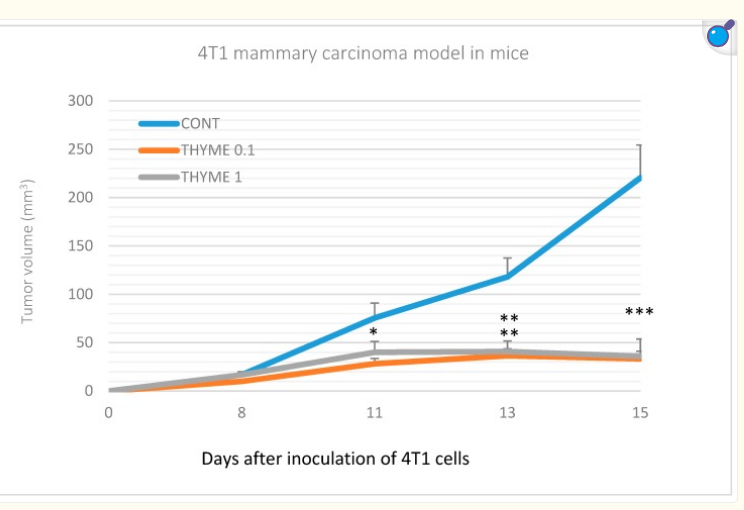
It stopped growing completely ~2 weeks (what would have happened if it was a couple weeks longer?)
-
Moreover, the T. vulgaris (THYME 1) dose significantly lowered total cholesterol levels by 11% (p < 0.05) versus THYME 0.1. A significant increase in serum glucose by 8.5% (p < 0.05) was observed in the THYME 0.1 group and by 19% (p < 0.001) in the THYME 1 group versus the control (data not shown). No differences in final body weight were observed between any groups. A significant increase in food intake was observed: +1.6 g (THYME 0.1) and +2.6 g (THYME 1) versus the control (14.7 g/rat/day).
-
By contrast, in mice, a reduced food intake was found in the THYME 1 group versus the control (1.51 versus 2.10 g/mouse/day). The doses of T. vulgaris were safe without undesirable side effects on rats after chronic administration (vitality/activity of animals, hair, mucosa, food and water intake, liver steatosis, hepato/splenomegaly, gastritis, or hematopoietic disorders)
Some methylation differences
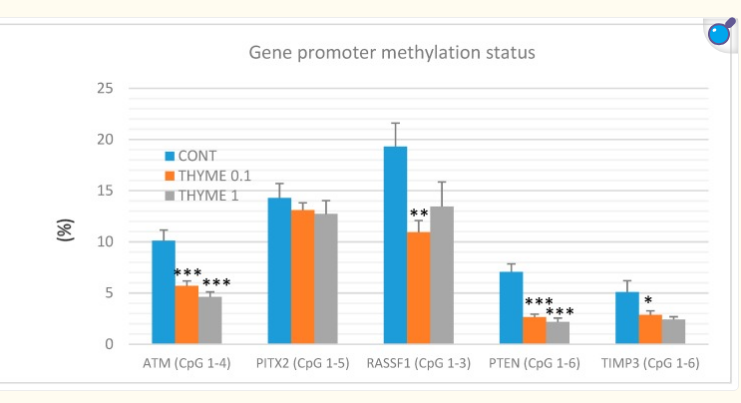
this result is outstanding as it overcomes the anticancer effects of well-validated synthetic drugs used in BC treatment: manumycin A [29] or paclitaxel [30] in the same 4T1 mouse model. In the chemoprevention study, the higher T. vulgaris dose significantly lowered tumor frequency, the most sensitive parameter of rat mammary carcinogenesis, by 53% compared to the control group. Contrary to the mouse model, the reduced dietary dose of T. vulgaris was ineffective in the NMU rat model. This result suggests that the sensitivity of different cancer cells in vivo (chemically-induced tumors or 4T1 allografts with different molecular characteristics) to phytochemicals of T. vulgaris is dose-dependent.
Complete remission of lymphoma with herb combination , 2 months
https://pmc.ncbi.nlm.nih.gov/articles/PMC9900160/#section2-15347354221147515-
The patient achieved a long-term complete remission and good quality of life over an 8-year follow-up under maintenance care of CHM. To the best of our knowledge, this is the first complete case report on DHL involving CHM.
-
Because of intolerance to the intensive chemo-immunotherapy, he stopped the chemotherapy at the third cycle about 7 weeks before he was recommended to our clinic in March 2014. It should be noted that this patient came to Chinese medicine treatment 7 weeks after the third cycle of chemo-immunotherapy which is longer than the usual 4 weeks from prior treatment
Another case of an 82-year patient with DHL was reported by Zaman et al.10 The patient initially received 3 cycles of R-CVP (Rituximab, Cyclophosphamide, Vincristine, and Prednisolone), but could not continue the intensive course of chemotherapy due to his compromised renal and blood parameters, and the patient died with the progression of the disease.
Cheema presented with another DHL case of unusual response after sequential aggressive chemotherapies.11 This was a man in his 50s with stage IIA DHL treated by R-Hyper-CVAD (rituximab plus cyclophosphamide, vincristine, doxorubicin, and dexamethasone alternating with methotrexate and cytarabine) but developed renal failure after the first cycle. The therapy was switched to R-ICE (rituximab plus ifosfamide, carboplatin, and etoposide) and induced complete remission. Unfortunately, the patient developed prolonged severe thrombocytopenia (grade 3) requiring a total of 4 units of platelet transfusion. By being treated with autologous hematopoietic cell transplantation (AHCT), he had a good tolerance and remained in complete remission for 1 year. These cases reveal that DHL has a poor prognosis and there is no accepted standard of treatment for DHL. The aggressive immunochemotherapy limits the outcome due to adverse effects or the intolerance of the patients.- the basic prescription was Sijunzi Decoction plus Prunella vulgaris with raw herbs used from March 2014 to March 2017 including Prunella vulgaris 20 g, Sophora flavescens 12 g, Scutellaria baicalensis 15 g, Salvia miltiorrhiza 12 g, Codonopsis pilosula 15 g, Atractylodes macrocephala 12 g, Poria cocos 15 g, and Glycyrrhiza uralensis 5 g. The herbs in the prescriptions were amended according to the patient’s responses. The CHM was administered daily in 2 separate decoctions: for the first decoction, 1000 ml of cold water was added to the herbal mixture, which was then boiled for approximately 50 minutes to reduce the volume to about 250 ml. This decoction was taken each morning. The remaining herbal mixture was used for making a second decoction which was taken each afternoon. This was prepared by using 750 ml of cold water and boiled for approximately 30 minutes to reduce the volume to about 200 ml.
After 2 months of the CHMs used, the patient felt his right groin mass disappeared.
His energy and digestion became normal. Blood tests showed that his hemoglobin and blood platelets became normal. LDH was reduced from 298 to 162 U/L, in the normal range. During the CHMs treatment period from 2014 to 2019, his adherence and tolerability to CHM were well maintained and no adverse events were observed. Follow-up CT imaging on the neck, chest, abdomen, and pelvis in May 2014 showed that the right iliac fossa mass had resolved with no residual mass.
no hematologic toxicity, hepatoxicity, or nephrotoxicity from CHMs were identified. Further follow-ups until 2020 found that he had been living and enjoying a good quality of life almost 8 years post-diagnosis.
It is important to note that the patient had continually received 5-year CHM maintenance care which may benefit his outcomes of long-term disease-free and good quality of life. The basic prescription of CHM used in this case is a well-known formula known as Sijunzi Decoction (SJZ). (they switched to granules later)
Melanoma & Inositol + IP6 , complete remission
In January 2015 the patient presented with a new subcutaneous lesion in his left medial thigh that was biopsied and confirmed to be BRAF V600E mutant melanoma. Left medial thigh melanoma was 3 cm in size. Restaging scans of the chest/abdomen/pelvis revealed a new mediastinal and right hilar lymphadenopathy with multiple pulmonary nodules (Fig. 2). Lactate dehydrogenase was within normal limits and he was staged as having a stage IVB disease.
The patient was offered systemic therapy with both immunotherapy and targeted therapy but he declined both and instead elected to pursue the combination vitamin IP6+inositol (800 mg/220 mg), five tablets in the morning and five in the evening daily. To our surprise, restaging scans 6 months later showed significant improvement. Subsequent CT scans showed continued response with a decrease in the size of the hilar and mediastinal lymph nodes and shrinkage of the left medial thigh in the transit lesion. The patient went into complete clinical and radiological remission after being on the vitamin combination for 2 years (Fig. 2). Three years after relapse, the patient remains in complete remission and continues to take IP6+inositol daily. We have not seen any subjective or objective evidence of side effects that can be attributed to high doses of daily IP6+inositol intake so farAnimal studies have shown that the combination of IP6+inositol provides additive anticancer Fig. 2 Computated tomography with the contrast of the chest before (left) and 2 years after (right) starting inositol hexaphosphate + inositol showing complete radiologic resolution of the upper right hilar lymph node. Inositol hexaphosphate (IP6) plus inositol Khurana et al. 323 Copyright r 2019 Wolters Kluwer Health, Inc. All rights reserved. properties than each given individually
- A few weeks later, a progressive disappearance of all nodules was noted